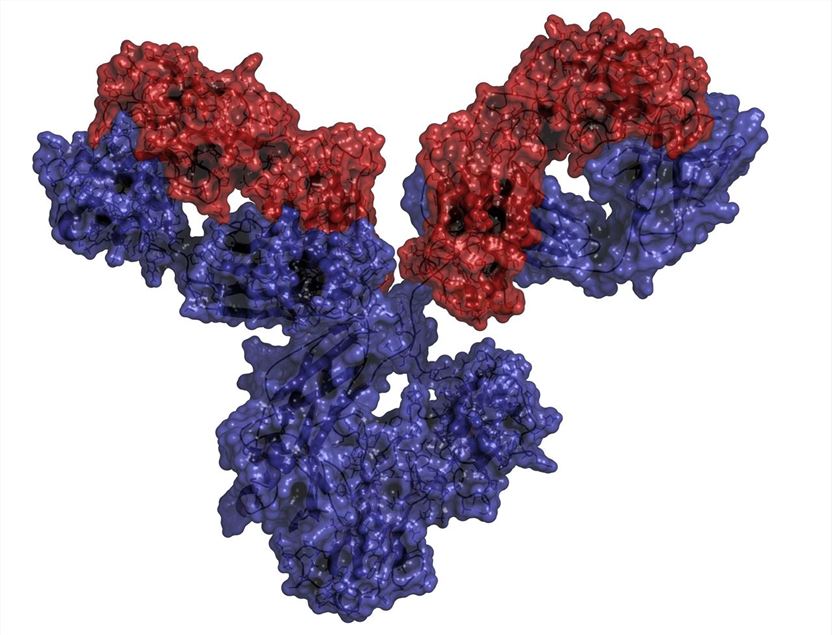Fab class antibody fragments are characterized by their small molecular mass, high tissue distribution specificity, and & low immunogenicity. They can be genetically engineered for precise manipulation, making them essential components in pharmaceutical research. Currently, Fab antibody fragments find extensive applications in disease prevention, diagnosis, and treatment across a broad spectrum of medical fields. Scientific discoveries have unveiled the unique weak acidity within tumor microenvironments, a crucial factor in the development of pH-sensitive Fab antibodies. When compared to standard Fab antibodies, pH-sensitive Fab antibodies exhibit remarkable tumor-targeting precision and specificity. Drawing upon our extensive expertise and advanced phage display platform, Creative Biolabs offers comprehensive services to aid in the development of pH-sensitive Fab antibodies tailored to your specific needs.

Fab fragments, also known as antigen-binding fragments are a key segment of the antibody structure. Comprising both a complete light chain and a partial heavy chain structure, they offer the ability to bind to antigens. The light chain encompasses variable and constant regions, while the heavy chain includes variable and constant region fragments. These two segments are linked by a disulfide bond. Fab fragments are characterized by their small size, with a molecular weight of approximately 47-48 kDa. Fab fragments can be obtained by proteolytic cleavage of the full-field antibody. Compared to intact IgG antibodies, Fab fragments lack the Fc segment. This feature allows them to selectively bind to antigens without triggering precipitation reactions. Fab antibodies also boast low immunogenicity, making them less likely to be recognized by immune cells in the body. This characteristic significantly reduces the risk of hypersensitivity reactions and enhances product safety. Fab's unique structure, featuring both an antigen-binding region and a partially constant region, results in an antibody with the same antibody-antigen affinity as single-chain antibodies. Furthermore, Fab antibodies offer exceptional tissue penetration and exhibit a more stable structure. These attributes position Fab antibodies as powerful tools in clinical diagnosis and disease treatment, contributing to advancements in precision medicine.
Tumor tissues harbor unique glycolytic metabolic processes, resulting in a weakly acidic tumor microenvironment, distinct from the typical pH levels of normal tissues and blood, which are both 7.4. In recent years, researchers have capitalized on this disparity, forging groundbreaking developments in pH-sensitive biomolecules. These innovations have paved the way for more effective tumor-targeted therapeutic drugs and gene therapies, including pH-sensitive monoclonal antibodies, pH-sensitive Fab antibodies, and other pH-responsive agents..
The traditional techniques for Fab fragment preparation encompass enzymatic digestion, employing proteolytic enzymes like papain or pepsin to cleave human immunoglobulin G into F(ab')2, Fab, Fc fragments, and more. it's not without its shortcomings. First, it relies on limited and costly monoclonal antibody raw materials. Even with meticulous optimization of enzymatic cleavage, Fab fragments often exhibit diminished immunoreactivity. A more contemporary approach is the use of recombinant Fab, which can be expressed in both prokaryotic and mammalian systems. This method eliminates the need for post-translational modification and glycosylation due to the absence of the Fc region, offering inherent advantages. However, there are challenges in both system. E. coli expression is favored for its cost-effectiveness and rapid production but is susceptible to inclusion body formation, potentially compromising activity. Phage libraries have gained prominence as a means to prepare Fab antibody fragments. This technique, powered by phage display technology, begins with the creation of Fab fragment antibody libraries. After several rounds of meticulous screening and enrichment, high-affinity Fab antibodies can be obtained. Theoretically, the mouse B cell antibody library is less than 108, and the human B cell antibody library is less than 1012. While the Fab combination antibody library can reach the level of 1010-1013, increasing the possibility of screening the ideal antibody.
On the basis of Fab, pH-sensitive Fab can be obtained through strategic modifications of Fab groups, including amino acid side chain substitutions. It's important to remain vigilant, as changes in external conditions or Fab structure can impact Fab activity. Timely testing ensures the preservation of Fab functionality post-modification.
Creative Biolabs boasts a treasure trove of knowledge and expertise in the realm of pH-sensitive biomolecules. We are eager to share our insights on pH-sensitive Fab discovery with you, opening doors to precision therapies and innovative solutions.
All listed services and products are For Research Use Only. Do Not use in any diagnostic or therapeutic applications.